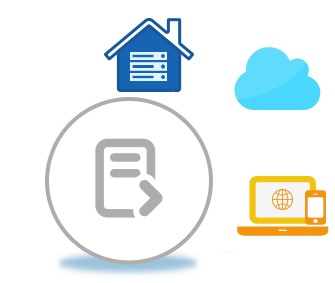Freely View PPTX File Online and Open or Load Document via Python
Develop powerful Python based PPTX document viewer utility application. Code listed to load or open PPTX document through Python.
View PPTX Document via Online App
- Import PPTX file to view by uploading it.
- Do it by clicking inside the drop area via drag and drop of viewer app.
- Depending on the size of PPTX file and internet speed, wait for few seconds.
- It will be automatically rendered and opened in the browser for view.
- Navigate between pages in case of multi pages PPTX document.
- Set page view zoom-in or zoom-out.
Load or Open PPTX File via Python for Viewer App
- Reference APIs within the project directly from PyPI ( Aspose.Slides )
- Create Presentation class object and load source PPTX file using it.
- Iterate through each slide to get content for your own developed Viewer app.
- Or Convert the source file to HTML using save method of same API.
- And use subprocess.run to invoke the browser to view PPTX file.
Code example in Python to view PPTX Files
Python Code to Load Microsoft Powerpoint Presentation
Python Code : Open Powerpoint Presentation File
Develop PPTX File Viewer Application via Python
Need to develop a PPTX viewer app or utility? With
Aspose.Slides for Python via .NET
a child API of
Aspose.Total for Python via .NET
, any python developer can integrate the above API code within its document viewer application. Powerful Python library allows programming any document display solution that can support many popular formats including PPTX format.
Python utility to process PPTX file for display app
There are alternative options to install “
Aspose.Slides for Python via .NET
” or “
Aspose.Total for Python via .NET
” onto your system. Please choose one that resembles your needs and follow the step-by-step instructions:
- Install Aspose.Slides for Python via .NET from PyPI
- Or Use the following pip commands
pip install Aspose.Slides.
System Requirements
- Python 3.5 or later is installed
- GCC-6 runtime libraries (or later).
- For Python 3.5-3.7: The pymalloc build of Python is needed.
For more details please refer to Product Documentation .
FAQs
- Can I use above Python code in my application?Yes, you are welcome to download this code and utilize it for the purpose of developing Python-based document viewer application. This code can serve as a valuable resource to enhance the functionality and capabilities of your projects in the domain of backend document processing such as reading slides and loading the presentation for display app.
- Is this online document viewer App work only on Windows?You have the flexibility to initiate viewing documents at any device, irrespective of the operating system it runs on, whether it be Windows, Linux, Mac OS, or Android. All that's required is a contemporary web browser and an active internet connection.
- Is it safe to use the online app for viewing PPTX document?Of course! The output files generated through our service will be securely and automatically removed from our servers within a 24-hour timeframe. As a result, the display links associated with these files will cease to be functional after this period.
- What browser should to use App?You can use any modern web browser like Google Chrome, Firefox, Opera, or Safari for online PPTX document viewer. However, if you're developing a desktop application, we recommend using the Aspose.Total document processing API for efficient management.
Explore File Viewer Options with Python
What is PPTX File Format?
The PPTX file format is the successor to the PPT (PowerPoint Presentation) format and is used by Microsoft PowerPoint, the popular presentation software included in the Microsoft Office suite. PPTX files were introduced with the release of Microsoft Office 2007 and are based on the Open XML file format.
PPTX files store presentations as a collection of individual slides, each containing various elements such as text, images, shapes, charts, tables, and multimedia content. The format uses XML-based encoding, which allows for more efficient storage, improved data recovery, and enhanced compatibility with other software applications.
One of the key advantages of the PPTX format is its smaller file size compared to the older PPT format. This is achieved through improved compression techniques and the elimination of redundant data, resulting in more compact files that are easier to share, transfer, and store.
PPTX files also offer advanced features and capabilities, including support for enhanced formatting options, slide transitions, animations, and embedded multimedia elements. The format allows for greater flexibility in designing and customizing presentations, enabling users to create visually appealing and interactive slideshows.
PPTX files can be opened, edited, and presented using Microsoft PowerPoint or compatible software applications across different platforms, including Windows, macOS, and mobile devices. They can be shared via email, uploaded to cloud storage services, or accessed through collaboration platforms for seamless teamwork and presentation delivery.


